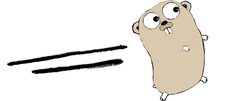Go version 1 series
Well Executed

© Lead Image CC BY-SA 3.0
The Go programming language helps programmers avoid the annoying routine and focus on the important stuff.
In 2009, Google launched the Go programming language [1]. An impressive collection of veteran developers worked on Go, including Ken Thompson (one of the inventors of Unix), Plan 9 co-creator Rob Pike, and Rob Griesemer, who previous worked on Google projects such as the Smalltalk variant Strongtalk.
The goal of Go was to create a statically typed language similar to C, but with updated features such as garbage collection and better type safety. In addition to its trademark CSP (Communicating Sequential Processes) [2] concurrency solution, the influences of Limbo [3] and Inferno [4] are evident.
Early versions of Go evolved at a rapid pace, with the code changing so fast that applications written one week would no longer compile in later versions. Finally, in 2012, Go 1.0 was released with the promise that you would be able to compile any code in future versions of the 1.x series. Since then, the focus of the Go developers has been on tools, compilers, and the run time.
[...]
Buy this article as PDF
(incl. VAT)
